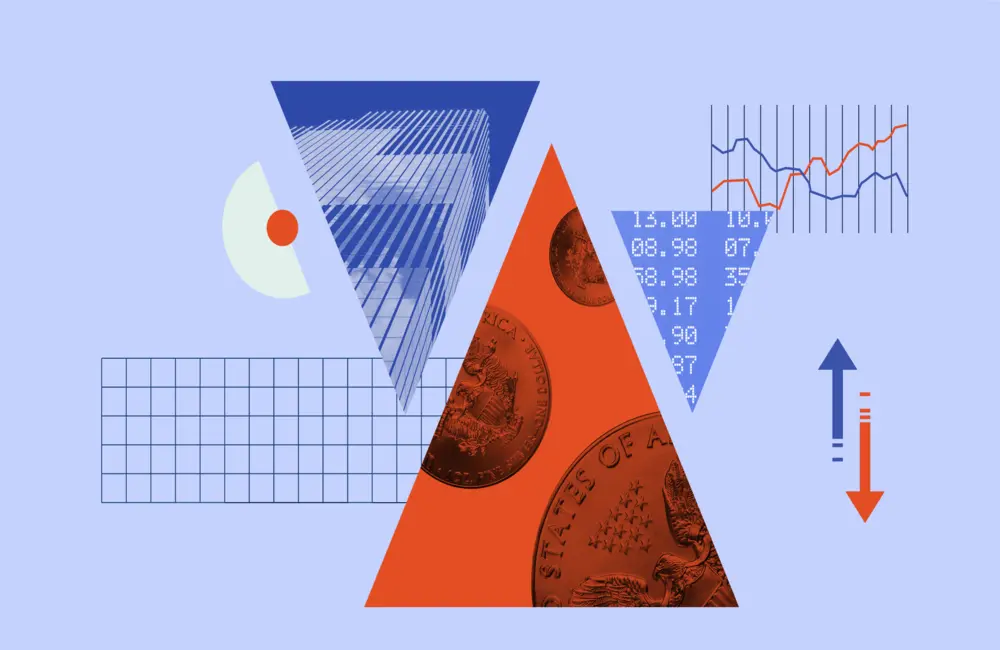ASX futures were higher by 166 points, or 2.4 per cent, at 7118 at 7am AEDT on Saturday, pointing to a strong start to trading.
Wall Street surged Friday as investors bought up risk assets on expectations that the conflict in Ukraine may spark a slowdown in the US Federal Reserve’s timeline for interest rate increases. The Dow Jones Industrial Average rose 2.5 percent on Friday. It was the best day for the Dow since November 2020. The S&P 500 gained 2.2%. The Nasdaq Composite rose 1.6%.
The pan-European Stoxx Europe 600 climbed 3.3 percent but was still down 1.6 percent for the week.
Over the weekend, Western powers increased pressure on Russia with new sanctions aimed at its central bank and its leadership. President Vladimir Putin responded by placing Russian nuclear forces on a high alert on Sunday.
“I don’t believe we are already over this very high volatility period,” said Daniel Egger, chief investment officer at St. Gotthard Fund Management. “Today we need to concentrate on what’s happening in Kyiv, how bloody the next few days are going to be, and I would say definitely the Russian sanctions could still be increased.”
The S&P/ASX 200 finished 0.1% higher at 6997.8 on Friday, but plunged 3.1% over the week for its largest weekly loss since October of 2020. The benchmark soared 0.8% at the opening but surrendered nearly all its recovered territory amid the war in Ukraine.
The financial and material sectors, which make up around 50% of the market capitalization of the ASX 200, dropped 1.0% and 0.1%, respectively.
Commonwealth, Westpac, NAB and ANZ fell between 0.9% and 2.2%.
The tech sector cushioned some of the damage, exploding 8.1% after a savage selloff the session before. Block’s ASX-listed securities surged 32% after the US payments company posted a better-than-expected 4Q profit.
On commodities, gold futures dropped 2pc to $US 1887. 60; Brent crude dropped 1.2% to $US97. 93, while iron ore dropped 2.1% to US$138.50.
In bond markets the yield on the Australian 10-year bond climbed to 2.23%. Yields on the US 10-Year Treasury note were flat at 1.96%. Yields rise when prices fall.
The Australian dollar was worth 72.29 US cents as of early Saturday morning, compared to 71.60 at the end of the day. The WSJ Dollar Index, which gauges the US dollar against 16 other currencies, declined to 90.01.
Asia
Across the Asian markets, Chinese stocks ended the session higher as the market recovered from steep losses on Thursday when the conflict between Ukraine and Russia triggered a regional selloff in equities markets. The benchmark Shanghai Composite Index gained 0.6% and the Shenzhen Composite Index rose 1.2%. The ChiNext Price Index, which tracks emerging industries and startups, closed up the most at 2.6 percent. Medical companies accounted for the biggest gains, as drug developers, hospital operators and medical-equipment suppliers surged. Energy and commodities stocks also helped, with strong demand for havens and high oil prices.
In Hong Kong, shares declined as the Russia-Ukraine crisis had an unclear outlook. The Hang Seng Index ended 0.6% lower. But the Hang Seng TECH Index gained 0.8%, with technology stocks that bounced back in the US ADR market overnight leading the way. There is no way to know which direction the market will go in the next five minutes, Swissquote said, noting that the only thing that's certain is uncertainty, and it would be this way for the next couple of sessions. Some of the HSI's laggards were PetroChina, which gave up 3.8%, and China Resources Land, which was down 3.3%. Elsewhere, Alibaba Health Information Technology rose 4.9% and Techtronic Industries gained 4.2%.
Japan’s Nikkei Stock Average gained 1.95% as it breathed a sigh of relief over the West’s relatively cautious sanctions toward Russia. Semiconductor-industry-related names led gains on the Nikkei, with Advantest up 7.7%, Lasertec adding 7.1% and Disco Corp gaining 6.6%. Industrial gas supplier Iwatani Corp climbed 1.7% following a report that a unit will partner with Chevron to build hydrogen fuelling stations in California by 2026.
Europe
European stocks were higher in late trade, having regained ground following steep losses in the previous session after Russia initiated a full-scale invasion of Ukraine. The pan-European Stoxx 600 was up 3.3%.
“With oil back below $100 a barrel, and gas prices declining today after yesterday’s jump, it seems traders expect little disruption to Russian exports following the invasion, let alone from any sanctions enacted,” analysts at Oanda say. “The latter is understandable because the proposed measures up until now have been, to say the least, underwhelming.”
In London, the FTSE 100 rose 3.9%.
Russia’s Moex stock-market gauge, which plummeted Thursday, gained about 19%. The ruble, Russia’s currency, rose nearly 3 percent to 82 a dollar, after losing nearly 8 percent Thursday.
Friday’s rally occurred before new waves of sanctions aimed at Russia’s central bank and leadership were announced over the weekend. And reports have emerged of A.T.M.s in Moscow running low on foreign currency as citizens scramble to convert rubles to dollars and euros.
North America
The stock market ended a turbulent week by rallying Friday, as investors scrambled to shift bets on what the Federal Reserve would do with interest-rate increases in the wake of Russia’s invasion of Ukraine.
Investors bought the dip across markets over the past two days as they waded back into risky assets ranging from shares of fast-growing companies to bitcoin. They flooded global stock exchange-traded funds with some $3.6 billion in the week through Thursday, including over $3 billion into the wide-tracking SPDR S&P 500 ETF Trust, according to FactSet.
The advances sent indexes sharply higher, recovering many losses stocks had incurred since Russia invaded Ukraine earlier in the week. The S&P 500 ultimately gained 0.8% in the four-day week of trading. Yet the broad benchmark remained mired in a correction after diving more than 10 percent from its January peak on Tuesday.
The Nasdaq Composite went on to finish up 1.6 percent for the four days, while the Dow Jones Industrial Average recovered from a steep loss to finish the week roughly flat.
Bitcoin, meanwhile, rose by 1.6%, as the cryptocurrency approached $40,000. Oil prices fell. Investors sold bonds, and the yield on the benchmark 10-year US Treasury crept back near 2%. Other so-called safe havens, including gold and silver, fell.
Despite the bounce, investors say they are preparing for more turbulence. And even after Moscow cautiously floated the idea of negotiations, allowing the stock market to climb Friday, Kyiv faced renewed bombing and land assaults.
“I don’t believe that this incredibly volatile phase is, even now, finishing,” said Daniel Egger, chief investment officer at St. Gotthard Fund Management. “We need to concentrate on what is happening there in Kyiv, how bloody will be the next few days, and I would say definitely the Russian sanctions could still be maximized.”
The Dow Jones Industrial Average gained 834.92 points, or 2.5 percent, to 34058.75 on Friday. It was the best day for the Dow since November 2020. The S&P 500 rose 95.95 points, or 2.2 percent, to 4384.65. The Nasdaq Composite rose 221.04 points, or 1.6%, to 13694.62.
Other analysts and investors pointed to an end-of-week rally as being more related to investors baking in expectations that the Fed will take a less aggressive trajectory on interest-rate increases. Many said they think the Ukraine conflict adds too much uncertainty to the economic picture, making a 0.25% rate increase more likely next month instead of the 0.50% increase some officials had previously signaled.
“Ultimately, the long-term path for risk assets remains mostly unchanged,” said Seema Shah, chief strategist at Principal Global Investors. “A tepid path higher albeit one that may get riddled with massive volatility and uncertainty.”
Stocks seemed headed for a week of crushing losses at first. On Monday, when markets were closed for a holiday, President Vladimir Putin of Russia sent troops into an eastern region of Ukraine. Stocks tumbled Tuesday as investors weighed the implications of the fighting, its impact on commodity markets and retaliatory Western sanctions on a world economy already contending with high inflation and interest-rate increases that major central banks are expected to follow through on.
By the end of Tuesday’s trading, the S&P 500 had fallen 1 percent, and was down more than 10 percent from an early-January record in its first correction in more than two years. The selling carried through Wednesday and most of Thursday, as Russia launched its invasion of Ukraine. But stocks rebounded midday Thursday after President Biden described new sanctions on Russia.
Other markets have been shaken as well by the conflict. Oil prices hit their highest level in almost a decade before dropping on Friday. Wheat futures have soared, too.
To date, investors have welcomed increasingly tight restrictions on Russian companies and individuals, with markets either clawing back some losses or rallying after sanctions were rolled out this week. In light of the extent of Moscow’s assault, investors are bracing for potentially tougher measures, including withdrawing Russia’s access to critical international finance infrastructure.
Most segments of the stock market ended the week with gains. Technology stocks, instrumental in the market’s twists and turns in recent sessions, gained 1.3% over the past four days of trading, with Google parent Alphabet climbing 3.1% in that time.
Utilities, the healthcare and real-estate sectors all added more than 2% over the week, and manufacturers and material firms edged higher. Firms in consumer staples, consumer discretionary and financials all posted slight losses on the week even after Friday's rally.
Futures for Brent crude, the global oil benchmark, dipped 1% to $94.45 a barrel, and European natural-gas prices fell back by more than a fifth after soaring Thursday. Brent crude reached $100 a barrel early Thursday before retreating.
Surging inflation and the possibility of tighter monetary policy were clouding the outlook for some traditional safe-haven assets like Treasury bonds, the US dollar and gold, said Yung-Yu Ma, chief investment strategist for BMO Wealth Management in the US.
Gold prices fell 2% to $1,886 a troy ounce.
“It seems certain military actions in Ukraine may be prolonged,” said Mr. Ma, introducing a factor that will complicate any short-term predictions about market movements.























